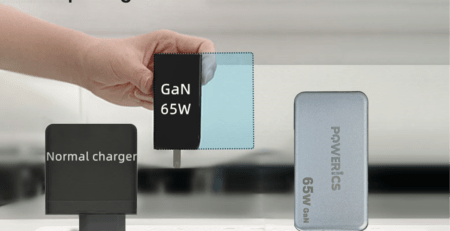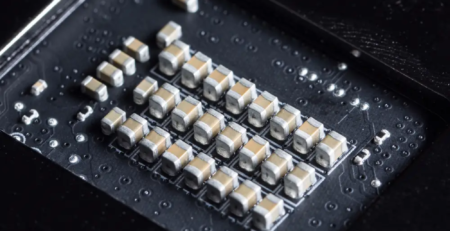Artificial Intelligence is no longer confined to data centers and cloud infrastructures. From the image engines and generative language models to autonomous robots and real-time decision-making systems, AI workloads are driving the limits of existing hardware. Highly specialized AI chips—GPUs, TPUs, and NPUs—are at the core of these systems, demanding high-current, stable power delivery to support continuous, intensive processing.
Legacy silicon power electronics will largely fall short in this new world. Low power efficiency generates heat buildup, voltage instability, and performance throttling—particularly unwanted in small systems with low thermal budgets. That’s when Gallium Nitride (GaN) becomes a game-changing power technology.
GaN power transistors switch at much higher frequencies than silicon, enabling faster, cleaner, and more efficient power delivery. This reduces energy loss by an enormous margin and keeps minimal heat generation, which is perfect for AI systems that need to run at optimal levels of performance for long periods of time. High-frequency operation also allows designers to employ smaller passive components, placing the size of the overall power subsystem at a premium—essential for mobile AI, robotics, and edge applications.
Efficient Compactness: Enabling the Next Generation of AI Systems
GAN’s low thermal impedance and high power density make it possible for it to support small AI modules and embedded systems without affecting reliability. It is especially suited for “always-on” edge devices such as real-time video analytics modules, smart cameras, and voice assistants where power supply is not always available.
Apart from this, in use cases like drones, medical robots, and mobile surveillance devices, GaN allows for designs that are lighter, cooler, and energy-efficient, which directly contributes to longer operation time, improved responsiveness, and enhanced safety.
Gallium Nitride in Edge Computing: Redesigning AI at the Edge
Edge computing is revolutionizing the processing, analysis, and response to data—close to where it is generated. But executing AI at the edge introduces an unfamiliar set of issues: space, thermal constraints, and power efficiency being top priority.
GaN technology facilitates these innovations by making smaller, quieter, and more thermally efficient edge deployments possible. From a smart city surveillance node to an industrial IoT gateway or a battery-powered AI assistant, GaN makes these systems delivers high compute power in a much smaller energy footprint.
By miniaturizing and reducing power supply hardware, GaN also lowers the barrier to deploying AI to extreme or distant locations—where maintenance is not feasible and reliability is paramount. This creates new prospects for AI implementation in medicine, crop management, energy, defense, and transportation.
GaN’s Future Opportunities: Enabling the Next Generation of AI Innovation
As AI increasingly penetrates everyday devices and infrastructures, intelligent, efficient power delivery is central to system design. The proliferation of edge devices, autonomous machines, and real-time AI applications call for a paradigm shift in power management and delivery.
Gallium Nitride is not just a performance booster—it’s an underlying enabler of future AI. It’s scalable, efficient, and small, so it’s the go-to for anything from consumer devices to mission-critical industrial AI applications.
In the next few years, we can anticipate GaN technology being embedded further into AI accelerators, portable AI platforms, autonomous vehicles, edge inference chips, and high-efficiency data center power supplies. With the manufacturing scaled down and the cost reduced, GaN will displace legacy silicon in most markets, becoming the cornerstone of the future of AI-powered, edge-driven innovation.
Conclusion
The convergence of edge computing and AI is revolutionizing our digital world, but it also creates new strains on power delivery systems like never before. Gallium Nitride emerges as the solution of paramount significance—to fill the performance and efficiency gap.
As the AI revolution accelerates, GaN will be at the forefront—empowering intelligent devices, making decisions faster, and powering the decentralized, intelligent world of the future.












Leave a Reply